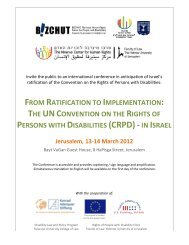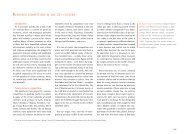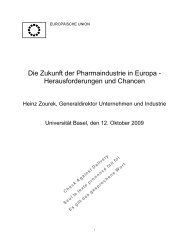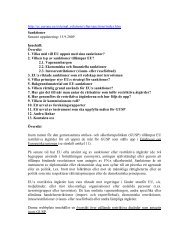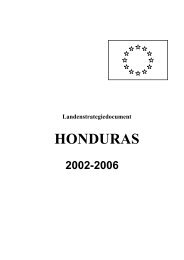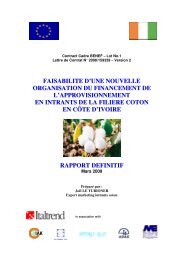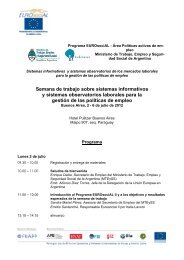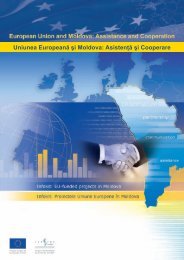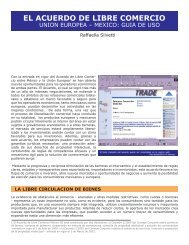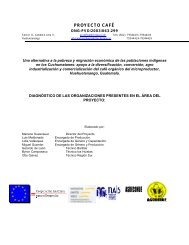Vision Group Report: Invigorating the Indonesia-EU Partnership
Vision Group Report: Invigorating the Indonesia-EU Partnership
Vision Group Report: Invigorating the Indonesia-EU Partnership
Create successful ePaper yourself
Turn your PDF publications into a flip-book with our unique Google optimized e-Paper software.
Estimating ex-ante <strong>the</strong> overall economic impact of a trade<br />
agreement is an important step in defining policy priorities.<br />
In this endeavour, computable general equilibrium (CGE)<br />
models are most suited in offering a sense of <strong>the</strong> likely<br />
economic results of an FTA. This section summarizes <strong>the</strong><br />
main results of two separate simulations: (i) a short term,<br />
static assessment of a future <strong>EU</strong>-<strong>Indonesia</strong> trade agreement;<br />
(ii) a longer-term, dynamic analysis, taking into account<br />
<strong>the</strong> synergies that can be created between new trade and<br />
investment opportunities. While <strong>the</strong> static assessment yields<br />
<strong>the</strong> gains for <strong>Indonesia</strong> in <strong>the</strong> magnitude of 0.1% of its GDP,<br />
<strong>the</strong> dynamic analysis taking into account accumulation of<br />
international investment flows brings <strong>the</strong> gains to 1.3%.<br />
I. effects of <strong>the</strong> eU-IndonesIa fta: short-terM assessMent<br />
One of <strong>the</strong> most widely used CGE models to estimate ex-ante<br />
<strong>the</strong> likely impact of a trade agreement is <strong>the</strong> standard static<br />
GTAP model. The underlying GTAP 7 database covers basically<br />
<strong>the</strong> entire world and contains detailed macroeconomic<br />
information for each country, thus allowing capturing intersectoral<br />
and inter-country effects a trade agreement is likely<br />
to induce. Before simulating <strong>the</strong> new trade agreement between<br />
<strong>Indonesia</strong> and <strong>the</strong> <strong>EU</strong>, a baseline against which results are<br />
benchmarked needs to be generated. The baseline takes<br />
44<br />
ANNEX 2<br />
POTENTIAL GAINS/ECONOMIC<br />
ANALYSIS<br />
into account <strong>Indonesia</strong>n and <strong>the</strong> <strong>EU</strong>’s bilateral FTAs with<br />
third countries that have been implemented since 2004. The<br />
policy scenario assumes tariff only full liberalization, i.e. <strong>the</strong><br />
elimination of all tariffs in trade in goods.<br />
One of <strong>the</strong> most important conclusions of this analysis is<br />
that although trade agreements need time to fully deliver<br />
<strong>the</strong>ir economic impact, even in <strong>the</strong> short run such a<br />
trade agreement would increase both <strong>Indonesia</strong>n and <strong>the</strong><br />
<strong>EU</strong> overall welfare. Given <strong>the</strong> tariff-only liberalization<br />
assumptions and <strong>the</strong> short-term time span, <strong>the</strong> additional<br />
effect on <strong>the</strong> <strong>Indonesia</strong>n GDP is relatively modest.<br />
Never<strong>the</strong>less, an additional 0.1% (524 million euro,<br />
based on <strong>the</strong> estimated 2010 GDP of <strong>Indonesia</strong>) could be<br />
generated annually. Given <strong>the</strong> much larger size of <strong>the</strong> <strong>EU</strong><br />
economy and its diversified economic and trade structure,<br />
<strong>the</strong> overall positive impact on <strong>EU</strong> GDP growth will also<br />
be relatively small in percentage terms. Overall, <strong>Indonesia</strong>n<br />
gains will originate primarily in more favourable terms of<br />
trade following <strong>the</strong> FTA.<br />
The detailed CGE disaggregation into economic sectors in<br />
<strong>Indonesia</strong> also allows a breakdown of economic effects by<br />
sector. While several sectors will clearly benefit as a result<br />
of <strong>the</strong> FTA, a limited number of economic sectors will be<br />
subject to adjustment pressure in <strong>the</strong> short run. While <strong>the</strong>




